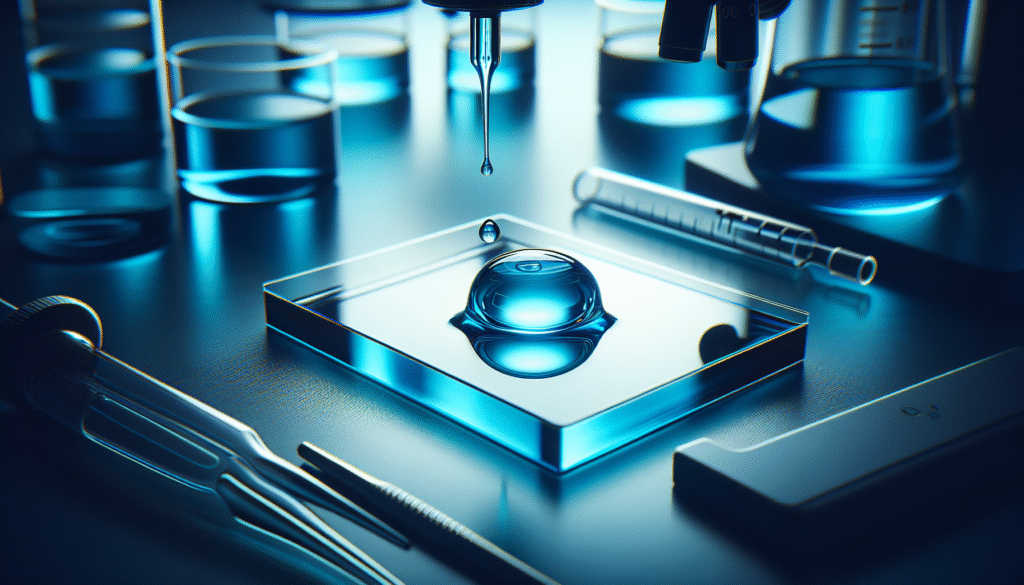
Have you ever considered the role of stains in microscopy and how they can enhance your understanding of biological specimens? methylene blue staining is a technique that has been widely employed in various fields of biology, including microbiology and histology, to visualize cellular structures and components. This guide is designed to provide you with an in-depth look at how to conduct a methylene blue staining experiment, ensuring that you achieve optimal results in your research.
Understanding Methylene Blue
Methylene blue is a synthetic dye that has been utilized in laboratory settings for over a century. Known for its vibrant blue color, this compound not only stains cells but also serves various other purposes, such as being an electron transport chain inhibitor in certain biochemical applications. The dye is particularly effective at binding to nucleic acids, proteins, and cell membranes, making it invaluable for visualizing cellular components under a microscope.
Properties of Methylene Blue
Methylene blue is hydrophilic, which means it interacts well with water and aqueous solutions. This property makes it particularly useful for staining biological specimens, as it can penetrate cells without causing significant damage. The compound is also known for its ability to selectively bind to different cellular structures, allowing you to highlight specific areas of interest.
| Property | Description |
|---|---|
| Molecular Formula | C16H18ClN3S |
| Color | Blue |
| Solubility | Soluble in water and ethanol |
| pH Level | Typically around neutral (pH 6-7) |
Preparing for the Experiment
Before embarking on your methylene blue staining experiment, it is essential to gather the necessary materials and prepare your workspace. Proper preparation minimizes the chances of contamination and ensures reproducibility.
Materials Needed
To conduct the experiment effectively, you will need:
- Methylene Blue Solution: Commercially available or prepared in the lab with a specific concentration.
- Microscope Slides and Coverslips: Used for mounting the specimen.
- Distilled Water: For diluting the methylene blue if needed and rinsing the slides.
- Pipettes and Droppers: For applying the stain and rinsing solutions.
- Staining Dishes: To hold the slides during the staining process.
- Microscope: A reliable microscope equipped for the type of analysis you intend to conduct.
Having these materials on hand helps streamline the staining process.
Safety Precautions
Before beginning your experiment, it is vital to observe safety precautions. Methylene blue can cause skin and eye irritation, and although generally regarded as safe in laboratory settings, it is prudent to handle it with care.
- Always wear gloves and protective eyewear.
- Conduct the experiment in a well-ventilated area or under a fume hood.
- Dispose of all waste according to your institution’s protocols.

Conducting the Experiment
Now that you’re prepared, it’s time to conduct your methylene blue staining experiment. Each step is crucial and must be followed carefully to ensure results are valid and reproducible.
Collecting Samples
The initial step involves collecting biological samples that you wish to stain. Depending on your focus—whether bacteria, tissue sections, or cells—the method of collection may vary.
- For bacteria: Use a sterile technique to isolate a colony from an agar plate.
- For tissue: Ensure that the tissue is thinly sliced to allow for effective staining.
- For cells: Culture the cells appropriately before sampling.
Creating the Staining Solution
You can purchase methylene blue in a ready-to-use form, but preparing your own solution allows for greater control over concentration.
- Disperse methylene blue powder into distilled water to a concentration typically ranging from 0.1% to 1%, depending on the intended application.
This concentration will influence the intensity of the staining.
Staining Process
-
Mounting the Sample: Place a small amount of the biological sample onto the microscope slide. If needed, use a pipette to add a drop of distilled water to dilute the sample.
-
Applying Methylene Blue: Using a clean dropper, apply 1-2 drops of the methylene blue solution onto the sample. Ensure the solution covers the entire sample area.
-
Incubation: Allow the specimen to incubate with the stain for about 5-15 minutes. The required time may vary based on the sample type and desired staining intensity.
-
Rinsing: After incubation, gently rinse the slide with distilled water to wash away excess dye. This step helps to prevent nonspecific staining, which can obscure cellular details.
-
Covering the Sample: Carefully place a coverslip over the stained specimen. The coverslip should be slightly angled during placement to avoid trapping air bubbles.
Observing Under the Microscope
With your sample prepared and covered, the next step is to observe it under the microscope. Adjust the magnification according to your needs, starting from a lower power lens to locate the area of interest before transitioning to higher magnifications for detailed observation.
-
Focusing the Microscope: Begin by focusing on the slide using the coarse adjustment knob, and then switch to fine adjustments for clearer visualization.
-
Documenting Your Findings: Utilize a notebook or digital device to record your observations. Take notes on the staining patterns, cellular structures, and any notable characteristics you observe.
Troubleshooting Common Issues
In any experiment, you may encounter issues that could affect your results. Understanding common problems and their solutions can save valuable time and effort.
Poor Staining
If you notice that the staining is weak or inconsistent, consider the following potential causes:
-
Concentration of Methlyene Blue: Ensure that your methylene blue solution is at the correct concentration. Dilution may be necessary for optimal staining.
-
Incubation Time: If the incubation time is insufficient, extend it to allow better dye absorption. Conversely, prolonged staining can lead to over-staining.
Background Staining
Excessive background staining can obscure the details of the sample. This might happen if:
-
Rinsing: Ensure you properly rinse the slide after staining to remove excess dye.
-
Sample Quality: High cell density or cellular debris can contribute to background staining. Consider prep techniques that yield cleaner samples.
Difficulty Focusing
Sometimes, clarity can be an issue. Possible solutions include:
-
Adjusting Light Source: Clear images depend on good lighting. Ensure the light source is adequate and correctly focused.
-
Microscope Calibration: Make sure your microscope is calibrated properly. Check that objectives and eyepieces are clean.

Analyzing and Interpreting Results
Once you have completed your staining experiment and documented your observations, the next step is to analyze and interpret the results. The insights you gain can impact your understanding and future research directions.
Identifying Stained Structures
The staining patterns observed through the microscope will help you identify various cellular structures:
-
Nucleus: Stained prominently, often darker than the cytoplasm due to a higher affinity for methylene blue.
-
Cytoplasm: May appear pale blue, facilitating comparison with the nucleus.
-
Cell Membrane: While not always distinctly visible, the membrane may be inferred through the cell’s overall morphology.
Comparing Different Samples
If you are working with multiple samples, comparison can be essential:
-
Take note of differences in staining intensity and patterns among various specimens; this may indicate differences in cellular composition or pathology.
-
Consider using statistical analyses if you have a quantitative aspect to your evaluation. Documenting differences in staining between groups can yield valuable data.
Applications of Methylene Blue Staining
Methylene blue staining has practical applications in various fields of study. Understanding these applications can give you insight into why staining techniques are so crucial in biological research.
Microbiology
In microbiological studies, methylene blue is frequently used to stain bacterial cells, revealing vital characteristics such as cell shape, size, and arrangement. It supports differentiating between live and dead cells since live cells typically retain more dye.
Histology
Histologists utilize methylene blue to visualize tissue sections under a microscope. This technique can illuminate tissue architecture and highlight disease states. By observing their morphology, researchers detect cellular anomalies.
Environmental Science
Methylene blue staining can also play a role in environmental studies. It assists in addressing questions related to pollution and the evaluation of microbial communities in water samples. By counting stained bacteria, researchers can estimate the population size and health of the microbial community.
Conclusion
Your understanding of how to conduct a methylene blue staining experiment will deepen your appreciation for the processes within biological systems. By mastering the staining technique, you not only enhance your skills but also contribute to the greater scientific community. This experiment holds value across various disciplines, illustrating the significance of visualizing microscopic life.
Additional Resources
Consider further reading on methylene blue applications and staining protocols to expand your knowledge:
- “Principles and Techniques of Biochemistry and Molecular Biology” – A comprehensive resource for understanding biological staining techniques.
- “The Biology of Microorganisms” by Madigan et al. – Useful for gaining insights into microbial techniques, including staining methods.
By continuing to engage with existing literature and conducting experiments, you position yourself as an informed researcher ready to tackle the complexities of the microscopic world.